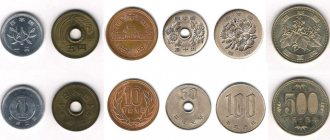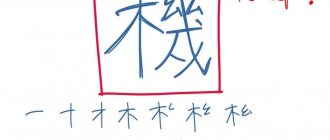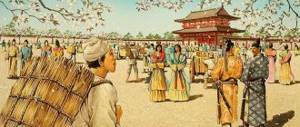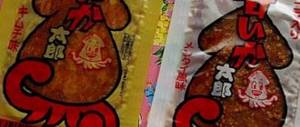What do they call rain in Japan?
Last time we talked to you about snow. But snow is not the only natural phenomenon for which the Japanese have found many names. This time we want to tell you about what kind of rain it gets in Japan and what names it goes by.
Of course, most Japanese people use the universal word雨
ame
when they talk about rain.
However, the story with rain is the same as with snow - depending on the time it falls, the strength and other qualities, the name changes. For example,小雨kosame
,
霧雨kirisame
,
小糠雨konukaame
,
時雨shigure
. All these names only demonstrate how subtly the Japanese felt the slightest changes in natural phenomena, how important it was for them to distinguish between all these types of rain and more.
For convenience, we decided to divide the types of rain into several groups according to the Japanese seasons.
Spring
The most “spring” type of rain in Japan is, of course,桜雨
sakuraame
.
From the name it is immediately obvious that this rain falls during the cherry blossom season. The Japanese believe that sakura under the raindrops has its own special charm. Sometimes this same rain is called花の雨hana no ame
“flower rain.”
, 春時雨
harushigure
, a sudden spring drizzle,
also falls If it coincides with the cherry blossom season, it is called花時雨hanashigure
(flower drizzle).
Tsuyu rainy season
I think that no one will be surprised that this group will contain the largest number of types of rain. It’s not for nothing that this Japanese season is called梅雨
tsuyu,
“plum rain.” All rains that fall at this time have the same name by default.
This season opens with rain, which has more than one name -走り梅雨
hashiri-tsuyu
、
迎え梅雨mukae-tsuyu
、
梅雨の走りtsuyu-no hasiri
. And they all carry approximately the same meaning of “meeting the tsuyu season.” The rainy season opens with rain - everything is logical.
黴雨
bayu
、
五月雨samidare
- these are all other names for
tsuyu
.
Bayu
can even be written with the same characters as
tsuyu
-
梅雨
.
samidare
is also spelled interestingly .
If you are familiar with Japanese writing, you will see the word “may” in the first two characters. Therefore, samidare
can be translated as “May rain.”
However, this is not its only meaning - another one is hidden in its sound.さsa
means the deity-kami of the fields, and
みだれmidare
“dripping water”.
It became May because, according to the old lunar calendar, Samidare
fell on the fifth lunar month.
Samidare
is a lingering rain that falls for a long time.
By the way, if this downpour was interrupted by periods when the sun began to shine, then such sunny intervals were called五月晴れsatsukibare
“clearings during rain.”
It happens that the rainy season passes without heavy rainfall. Then the tsuyu season is called空梅雨
karatsuyu
"empty rainy season",
早梅雨hideritsuyu
"quick rainy season" and
枯れ梅雨karatsuyu
"dry rainy season".
It also happens that it rains
, it would seem, have ended and gone, giving way to the summer heat, but suddenly it begins to pour like buckets again, as if the season had never ended.
Then such rains are referred to as戻り梅雨modoritsu
and
返り梅雨kaeritsu
“returning rainy season,” as well as
残り梅雨nokoritsu
“remaining rainy season.”
And there are also male and female rains at this time! Yes, they are literally called男梅雨
otokozuyu
“male tsuyu” and
女梅雨onnazuyu
“female tsuyu”. What is it? Well, “male tsuyu” is that type of weather when the sun is often shining outside, the weather is generally good, but is regularly interrupted by heavy downpours. If we are talking about “female tsuyu”, then know that there are constant lingering drizzling rains outside the window, the sky is constantly covered with gray clouds or a veil of fog. Probably, someone is even arguing on the Internet whether it is correct to use such names for rain in our time, if an exclusively negative description is thus assigned to one gender.
Summer
Early summer is associated with lush, bright green trees, and therefore the rain hanging in drops of water on green leaves is called青葉雨
aobaame
“rain of green leaves”,
翠雨suyu
“jade rain” or
緑雨ryoku-u
“green rain”.
Separately, the Japanese also note rain, which gives its nutritious moisture to grain and plants, acting as the breadwinner of the earth. Such rains are called瑞雨
zuyu
"good rain",
穀雨koku-u
"rain for grain" or
甘雨kan'u
"sweet rain".
There is another type of rain in Japan. This is洒涙雨
sairuyu
"rain of tears". This is the name given to the rain that falls on the Japanese summer holiday Tanabata. It is believed to be composed of tears shed by the separated weaver Orihime and Bootes. In some regions of Japan, it is believed that rain on Tanabata means that the date between Orihime and Bootes did not take place.
Autumn
秋入梅
akitsuiri
“rain of autumn”, as the name suggests, occurs in Japan at the beginning of the autumn season. As a rule, this is a downpour, signaling the beginning of a new red-gold season.
秋霖
shu:rin
“autumn lingering rain” is the main name for all autumn rains, which in fact can last for several days in a row.
Winter
Winter rain is a very common phenomenon for this period in Japan, because the average winter temperature there is much higher than here in Russia, and therefore in winter the Japanese see rain much more often than snow. Winter rains can be divided into two groups. One of them is氷雨
hisame
“freezing rain”.
Hisame
is a type of winter rain that occurs in late autumn and early winter, but sometimes hail is also called the same word, i.e.
literal rain of ice. Winter rains that occur during the rest of winter are called冬雨to:wu
“winter rain”,
寒雨kang’u
“cold rain” and
凍雨to:wu
“frozen rain”.











